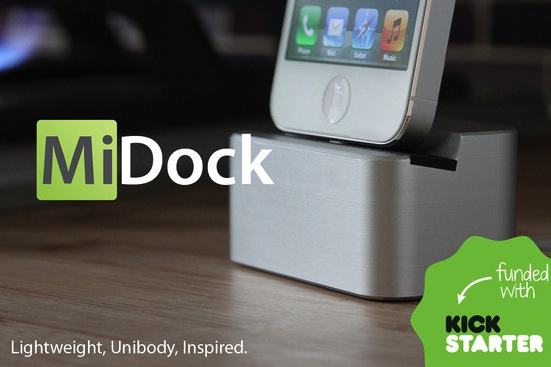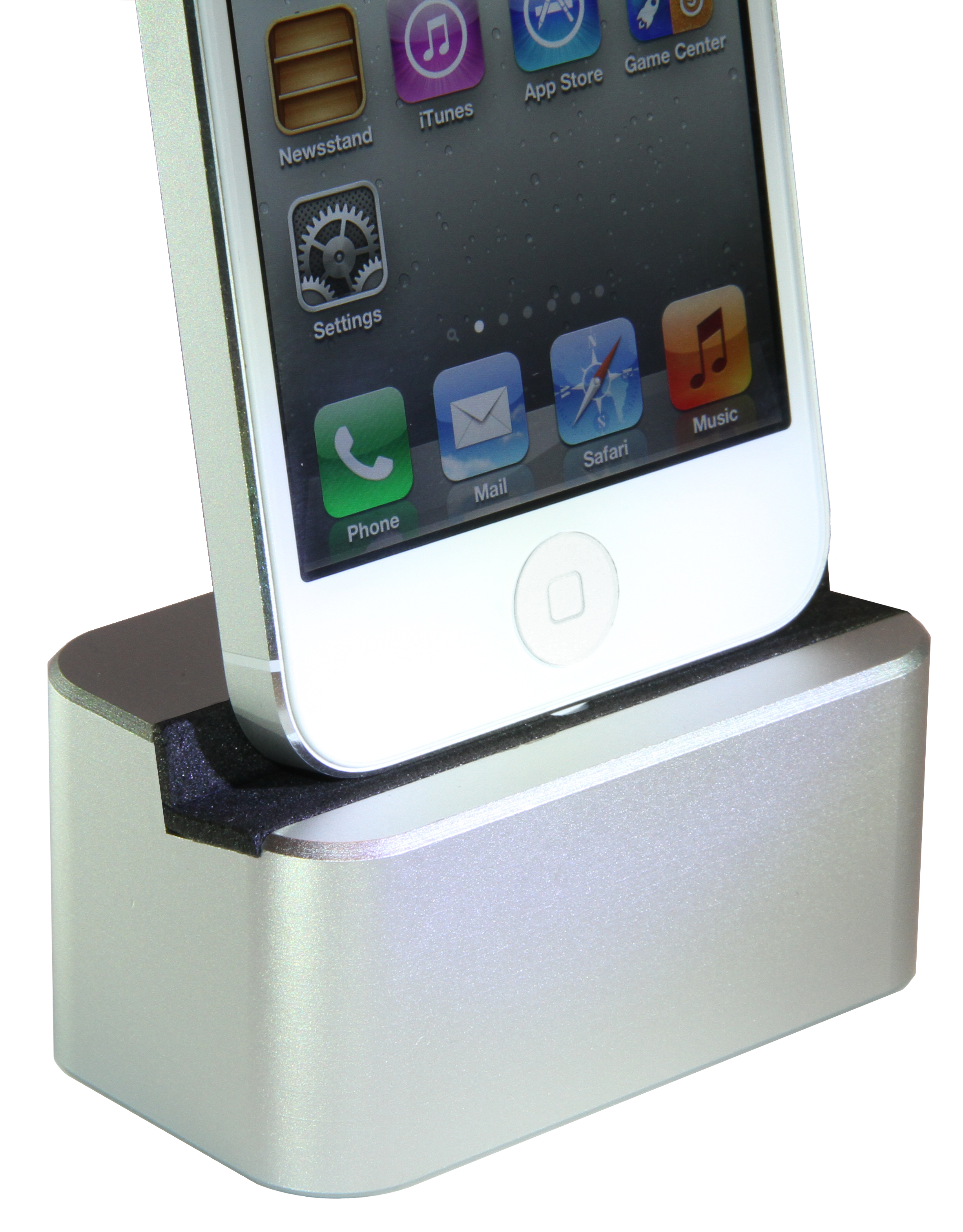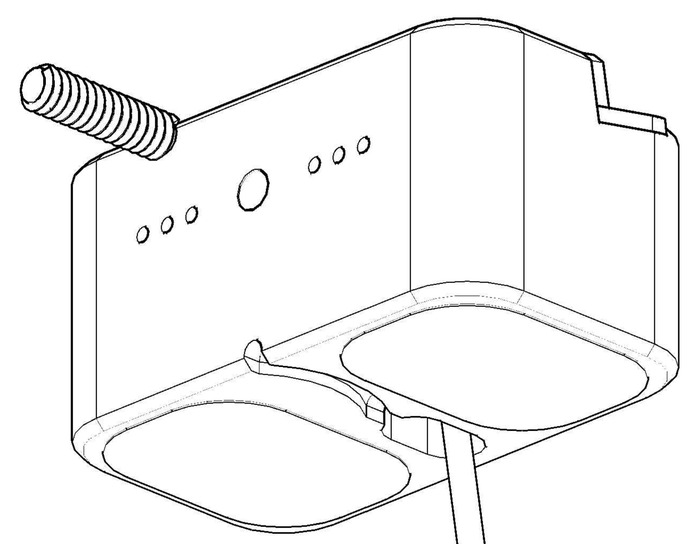
Like iPhone sleeve cases, the “dock” is a generally over populated hardware field that many manufacturers throw out as an option. With so many different docks on the market, little things make or break the product. At what angle is the iPhone sitting, does it adjust, what are the materials, can it hold both iPhone and iPad, etc? Today, I take a look at the successfully Kickstarted MiDock and put it through the paces.
My first impressions of the device were very positive and for my personal preferences, it fit with my iPhone usage. However, after looking at the MiDock more critically, it might not be for everyone. Take a stop beyond the fold to determine if the MiDock is right for you…
Design and function
As with all docks, the design inherently determines function, which is not necessarily true for all hardware accessories. MiDock is CNC machined from one solid block of aluminum. My natural finished silver MiDock sits next to an iMac, perfectly matching the color and finish. At just over one inch tall, the MiDock is a great resting place for an iPhone, but height is not the only factor to consider.
With simple curves and flat surfaces, MiDock fits in well with the iPhone and iMac design lines. It neither attracts attention, nor gives up an opportunity to look elegant. It is, however, a solid small block, as seen in the images. Without any design cut outs or small armed design, the block looks heavy, but is contrarily lightweight due to the aluminum construction. Because it is lightweight, two micro suction cups keep MiDock well grounded when freeing an iPhone from the Lightning cable.

Micro suction cups are making their way into more hardware items for adhesion. I greatly appreciate this proliferation because it sticks to surfaces, but does not leave any residue. Even better, if it stops sticking to the surface, simply wash it clean of dust and debris, dry, and re-attach. Opting for micro suction instead of the now old-school 3M strip option, is cause for praise.
Between the micro suctions pads is a small channel, into which the Lightning cable is routed. The cut channel means the stand will sit flush on the table surface. The Lightning tip is inserted from the bottom side and twists into place. Using a hex screw, the tip can be placed at assorted heights to accommodate different cases. However, moving the tip up and down is the only option. Consequently, if the case is too thick, it will not rest between the tip and the back dock lip. Anything much thicker than a feather thin snap case will be too thick for this dock.
Bottom with micro suction pads and Lightning channel
Additional items to consider include the inability to use the dock without plugging into the cable. Because the dock lip where the iPhone rests is a flat surface, placing an iPhone down without the cable will cause it to fall over. The dock relies on the cable to retain the iPhone. To protect the iPhone from scratches, the same location does use a foam buffer, preventing a metal on metal scratch.
In order to prevent muffling sound, the docking channel has two holes bored through the dock and past the foam. The channels lead to speaker grills on the back of the dock, which broadcast the sound, although in a backward direction. The sound is not muffled, but it does project it in the wrong direction. In this case, design limits function. The dock looks nice without holes bored into the front, but sound quality suffers as a result.

Conclusion
Well, this is a tough call because so many factors determine the overall impression. There are a lot of great things playing into this dock and several things that keep me from completely loving it. Take a few minutes before determining whether this dock is for you. Do you prefer a dock that is only sized for an iPhone? Would you like a single unit, machined design? Do you care if the Lightning cable must be installed to hold the iPhone? Do you have a thick case on your iPhone?
Depending on how you answered the above questions, this case is either completely perfect for you, or completely worthless. It really can go either way.
Personally, I like the looks, the coloring, and micro suction cups, which even work on my natural wood desk. I like installing my own Lightning cable because it keeps costs down, but I don’t like relying on the cable to prop the iPhone. The viewing angle is a little too 90 degrees for my taste and it isn’t adjustable. Additionally, the foam pad is a nice touch that other manufactures sometimes forget. A small size is great and the footprint leaves room for other desktop items.
Overall, I am really in the middle of the road. I can say that it has been on my desk for the better part of two months and I have not used it as much as other stands, primarily because I prefer not to charge my iPhone every time it is docked. Maybe that is my final determiner and I will leave it there.
Ultimately, it is your call. Think carefully about how you use your iPhone before making a purchase. At £34.00 ($55) in silver and black, it is reasonably priced for European customers, but on the expensive side if you are a US Dollar shopper. If you are interested, there is another upcoming dock, offered by the same company, made specifically for iPad. I will be covering it shortly in an additional review. Thanks to the team for sending them over the pond for review.
What do you guys think about the MiDock?
[iDownloadBlog review disclaimer statement]
